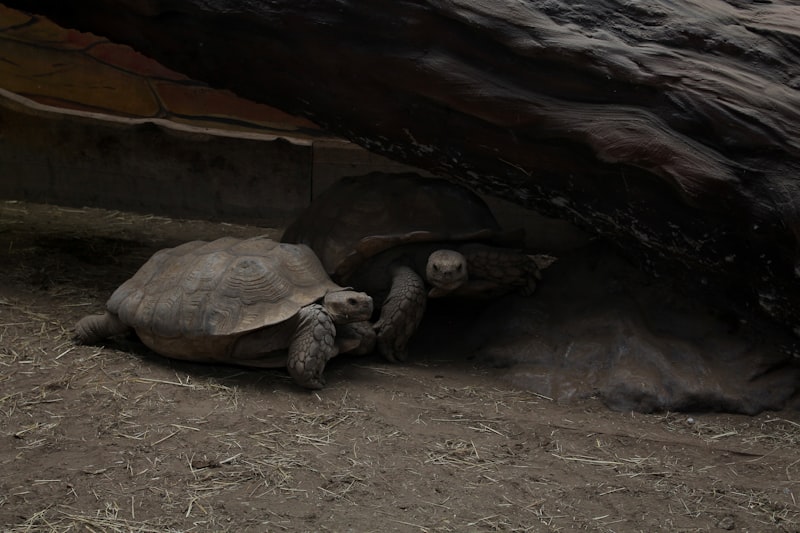Imagine encountering the Kemp’s Ridley, the smallest and most endangered of all sea turtles, gracefully navigating the Gulf of Mexico’s azure waters. Its small size belies its importance in marine ecosystems, symbolizing both fragility and hope in conservation efforts.
In contrast, the Leatherback turtle, the largest and most migratory of all sea turtles, evokes awe with its immense size and ability to travel vast distances across oceans. Found in tropical and temperate waters worldwide, this majestic creature is known for its distinctive leathery shell and deep-diving capabilities, delving into the depths in search of its favorite prey, jellyfish.
Venture to the shores of the Maldives, and you might witness the Hawksbill turtle, renowned for its intricately patterned shell and role in coral reef health. These agile creatures navigate coral mazes with ease, their presence crucial in maintaining the delicate balance of underwater ecosystems.
Further west, the Olive Ridley turtle, named for its olive-colored carapace, gathers in arribadas, massive nesting gatherings along the coasts of Mexico and Costa Rica. This phenomenon, a spectacle of nature, underscores the importance of protected nesting grounds in preserving species survival.
Each species of sea turtle carries a unique tale of survival against the odds, navigating threats from habitat loss to marine pollution. Their journey through life’s vast oceans inspires conservation efforts worldwide, reminding us of our responsibility to safeguard these ancient mariners for future generations.
A Dive into Elegance: Discovering the World’s Most Stunning Sea Turtles
Among the most stunning of these creatures is the Hawksbill turtle, renowned for its dazzling shell that resembles a mosaic of precious gems. Found in tropical waters worldwide, from the Caribbean to the Indo-Pacific, the Hawksbill’s striking appearance has earned it the nickname “jewel of the sea.” Its intricate shell, composed of overlapping scales called scutes, ranges from hues of amber and gold to deep brown, creating a visual spectacle that enchants divers and photographers alike.
Equally enchanting is the Leatherback turtle, the largest of all sea turtles and a marvel of evolutionary adaptation. Unlike its bony-shelled relatives, the Leatherback’s shell is covered with a leathery skin, allowing it to withstand the cold temperatures of the open ocean. Its massive size and streamlined body enable it to dive to depths exceeding 1,000 meters in search of its favorite prey, jellyfish.
Venturing into the warm waters of the Galápagos Islands unveils the Pacific Green turtle, celebrated for its emerald-green shell and gentle nature. These turtles play a crucial role in maintaining the health of coral reefs, as they graze on algae that can otherwise smother coral polyps. Their peaceful demeanor and distinctive coloration make them a favorite subject for underwater photographers and conservationists alike.
In Southeast Asia, the Loggerhead turtle commands attention with its powerful build and reddish-brown shell. Named for its strong jaw muscles, which allow it to crush hard-shelled prey like crabs and mollusks, the Loggerhead roams vast stretches of the Indian and Pacific Oceans. Conservation efforts are crucial for these turtles, as they face threats from habitat loss, pollution, and accidental capture in fishing gear.
Graceful Guardians of the Ocean: The World’s Most Beautiful Sea Turtles
One of the most enchanting sea turtles is the Hawksbill turtle (Eretmochelys imbricata). With their intricate, overlapping scales on their shells that resemble a piece of art, Hawksbills are true marvels of nature. Their slender, pointed beaks allow them to reach into crevices on coral reefs, where they find their favorite delicacies such as sponges and algae. These turtles are crucial to the health of coral reefs, maintaining balance within the ecosystem by controlling sponge populations.
Another mesmerizing species is the Loggerhead turtle (Caretta caretta), named for its large head and powerful jaw. These robust creatures travel across vast oceans, covering thousands of miles during their migrations. Loggerheads play a vital role in marine food webs by feeding on bottom-dwelling organisms like crabs and mollusks, thus helping to regulate these populations.
The Leatherback turtle (Dermochelys coriacea) stands out as the largest and most unique of all sea turtles. Instead of a hard shell, it possesses a flexible, rubbery skin that resembles leather, hence its name. This adaptation allows Leatherbacks to dive to incredible depths in search of their jellyfish prey. They are truly deep-sea champions, perfectly adapted for a life in the open ocean.
The Green turtle (Chelonia mydas) is perhaps the most widely recognized, with its smooth, olive-green shell and relatively small head compared to other species. Green turtles are herbivores, primarily feeding on seagrasses and algae. They are known for their long migrations between feeding and nesting grounds, demonstrating incredible navigational skills.
Lastly, the Olive Ridley turtle (Lepidochelys olivacea) is known for its olive-colored shell and unique mass nesting behavior known as arribadas. Thousands of females gather simultaneously on nesting beaches to lay their eggs, creating a breathtaking spectacle of nature.
Jewels of the Sea: Meet the Most Exquisite Sea Turtles Around the Globe
One of the most revered among them is the Hawksbill Turtle (Eretmochelys imbricata), known for its intricate, overlapping scales that resemble the patterns of a finely crafted jewel. Found in tropical coral reefs around the globe, these turtles play a crucial role in maintaining the health of their habitat by feeding on sponges and other marine creatures, thus contributing to the delicate balance of the underwater ecosystem.
Moving across the Pacific Ocean, we encounter the Green Turtle (Chelonia mydas), recognized for its smooth, olive-colored carapace that glows like a polished gem under the sun’s rays. These majestic creatures are known for their extensive migrations between feeding and nesting grounds, demonstrating a remarkable resilience that underscores their importance in marine conservation efforts.
Traveling to the southern hemisphere, we discover the Leatherback Turtle (Dermochelys coriacea), the largest of all sea turtles. Unlike its relatives, the Leatherback’s shell is not made of hard, bony plates but instead of a tough, leathery skin that grants it a distinct advantage in colder waters. Its unique physiology allows it to dive to incredible depths in pursuit of jellyfish, a staple of its diet.
In the azure waters of the Indian Ocean, the Loggerhead Turtle (Caretta caretta) commands attention with its robust build and reddish-brown shell. Named for its oversized head and powerful jaws, this species is known for its strong swimming abilities and is often found in coastal regions where it nests on sandy beaches, contributing to the spectacle of sea turtle conservation efforts worldwide.
Across every ocean, sea turtles embody a timeless allure, their presence a testament to the interconnectedness of our planet’s diverse ecosystems. From the vibrant coral reefs of the Caribbean to the icy currents of the Antarctic, these jewels of the sea continue to inspire wonder and reverence, reminding us of the need to protect and preserve our oceans for generations to come.
Splendor Underwater: Unveiling the Beauty of Earth’s Most Gorgeous Sea Turtles

Imagine gliding through crystal-clear waters, where sunlight filters down in shimmering rays, illuminating the graceful movements of sea turtles. Their shells, a masterpiece of nature’s design, come in a spectrum of colors from vibrant greens and yellows to deep blues and browns, each marking as unique as a fingerprint.
Sea turtles, ancient mariners of the ocean, navigate vast distances with an innate sense of direction that defies comprehension. From the loggerhead’s robust frame to the sleek silhouette of the leatherback, each species possesses its own distinctive charm. Their resilience through millennia speaks volumes about adaptation and survival in the ever-changing seas.
These remarkable creatures not only captivate with their beauty but also play crucial roles in marine ecosystems. As they glide effortlessly through seagrass meadows and coral reefs, they help maintain the delicate balance of these habitats. Their feeding habits contribute to the health of seagrass beds, while their movements facilitate the dispersal of nutrients essential for coral growth.
Encounters with sea turtles leave a lasting impression on those fortunate enough to witness them in their natural habitat. They embody a sense of timelessness, reminding us of the enduring wonders our planet holds. To swim alongside these gentle giants is to glimpse into a world where beauty and grace converge in perfect harmony.
In a world where natural wonders face increasing threats, the preservation of sea turtles and their habitats becomes ever more critical. Conservation efforts worldwide strive to protect nesting beaches, reduce marine pollution, and mitigate the impacts of climate change to ensure these majestic creatures continue to grace our oceans for generations to come.
Beyond Blue Horizons: The Enchanting Colors of Earth’s Prettiest Sea Turtles
Imagine a world where the ocean’s depths hold treasures beyond imagination. Dive into the realm of sea turtles, where nature’s palette paints these majestic creatures in hues that defy the ordinary. From the vibrant greens of the green sea turtle to the soothing blues of the hawksbill turtle, each species carries a unique signature that captivates the heart.
The green sea turtle, known for its olive-green shell and smooth, streamlined body, glides gracefully through the ocean waters. Its coloration blends seamlessly with the swaying sea grass, offering camouflage against predators while embodying a sense of tranquility beneath the waves.
Contrasting the green sea turtle’s muted tones is the hawksbill turtle, adorned with a shell that resembles a stained-glass masterpiece. Shades of amber, gold, and fiery orange swirl together, reflecting sunlight like a kaleidoscope underwater. This remarkable coloration not only mesmerizes observers but also serves a practical purpose in the turtle’s ecosystem, helping it blend with the vibrant coral reefs it calls home.
Moving from the tropical hues of the hawksbill, the loggerhead turtle presents a more understated elegance with its reddish-brown carapace. Like weathered leather, its shell tells tales of journeys across vast ocean expanses, embodying resilience and quiet strength against the elements.
Further enchanting the seascape are the leatherback turtles, whose dark, almost black shells glisten with a subtle sheen. These giants of the sea, adorned in midnight hues, evoke a sense of mystery and wonder as they navigate the open ocean with unmatched grace.
Each species of sea turtle, with its distinct coloration and markings, adds a chapter to the story of our oceans. Their beauty not only inspires awe but also underscores the importance of conservation efforts to protect these ancient mariners and their delicate habitats.
As stewards of the sea, we are entrusted with preserving these enchanting colors for future generations to marvel at. Through awareness, education, and action, we can ensure that the blue horizons continue to harbor the most beautiful sea turtles Earth has to offer, painting our oceans with hues that are as vibrant as they are vital.
Oceanic Wonders: Captivating Tales of the World’s Most Beautiful Sea Turtles
Imagine diving into the azure waters of the world’s oceans, where beneath the waves, a world of enchantment awaits. Among the most mesmerizing creatures that grace these waters are sea turtles, revered for their grace and endurance. These ancient mariners have navigated the seas for millions of years, embodying resilience and beauty.
One of the most famous sea turtle species is the majestic Green Sea Turtle (Chelonia mydas). Found in tropical and subtropical waters, these gentle giants are known for their olive-colored shells and serene presence. They are herbivores, dining on seagrasses and algae, playing a crucial role in maintaining the health of coral reefs and marine ecosystems.
In contrast, the Loggerhead Sea Turtle (Caretta caretta) is robust and adventurous, traveling vast distances across the Atlantic and Pacific Oceans. Their reddish-brown shells and powerful jaws are adapted for a diet that includes crustaceans and mollusks. Their nesting sites, often along sandy beaches, attract conservation efforts worldwide to protect these ancient nesting grounds.
Venturing into colder waters, the Leatherback Sea Turtle (Dermochelys coriacea) stands out with its dark, rubbery skin and large size. These deep-sea divers travel incredible distances, crossing oceans to feed on jellyfish. Their adaptability to different climates and ocean depths makes them a symbol of survival in challenging environments.
The Hawksbill Sea Turtle (Eretmochelys imbricata) is renowned for its exquisite shell, coveted for centuries in the creation of jewelry and ornaments. Despite conservation efforts, their populations face threats from illegal trade and habitat loss. Found in coral reefs, they contribute to the ecosystem’s health by feeding on sponges, maintaining a delicate balance in underwater habitats.

Lastly, the Olive Ridley Sea Turtle (Lepidochelys olivacea) is known for its synchronized mass nesting events, known as arribadas, where thousands of turtles come ashore to lay eggs. These medium-sized turtles have a heart-shaped shell and primarily feed on jellyfish and crustaceans. Their nesting habits highlight the interconnectedness of marine life cycles and the importance of conservation efforts to protect nesting grounds.
As guardians of the oceans, sea turtles symbolize the delicate balance of marine ecosystems and the resilience of nature. Each species tells a tale of survival against the odds, captivating the hearts of conservationists and ocean lovers alike.
Nature’s Living Art: The Spectacular Patterns of Earth’s Most Beautiful Sea Turtles
Have you ever wondered about the breathtaking beauty that dwells beneath the ocean’s surface? Sea turtles, with their mesmerizing patterns and graceful movements, are among the most captivating creatures found in our oceans. These majestic beings are not only a marvel of nature but also serve as a reminder of the intricate artistry that exists in the natural world.
Each species of sea turtle possesses its own unique pattern, making them easily distinguishable and truly remarkable. From the intricate swirls of the hawksbill turtle to the striking contrast of colors on the green sea turtle, these patterns are more than just aesthetics—they are a reflection of the turtle’s environment and evolutionary history. These patterns help camouflage them from predators or even aid in mating rituals, showcasing the adaptability and survival instincts that have allowed them to thrive for millions of years.
Imagine swimming alongside a loggerhead turtle, its shell adorned with a mosaic of brown and yellow hues, resembling a living tapestry woven by nature herself. Or encountering a leatherback turtle, with its smooth, leathery skin and distinct ridges that resemble the contours of a mountain range, perfectly adapted for gliding through the open ocean.
But beyond their visual appeal, sea turtles play a crucial role in maintaining the health of marine ecosystems. As they graze on seagrass and algae, they help to keep these habitats in balance, ensuring the survival of countless marine species that depend on these ecosystems for their own survival. Their migrations across vast distances also contribute to the dispersal of nutrients and help to connect different oceanic regions in ways that are still being studied by marine biologists.
Next time you find yourself by the ocean’s edge or diving into its depths, take a moment to appreciate the living artistry of sea turtles. Their patterns tell a story of resilience, adaptation, and the intricate beauty that continues to inspire awe and wonder in all who have the privilege to witness them in their natural habitat.
Frequently Asked Questions
What makes sea turtles so visually appealing?
Discover why sea turtles are visually appealing through their graceful movements, striking shell patterns, and vibrant underwater habitats.
Why are sea turtles important for ocean ecosystems?
Learn why sea turtles are crucial for ocean ecosystems. Their presence helps maintain healthy seagrass beds and coral reefs, supports biodiversity by balancing marine food webs, and contributes to beach nourishment through their nesting habits. Protecting sea turtles ensures the resilience of marine environments worldwide.
What are the most beautiful species of sea turtles?
Discover the world’s most stunning sea turtles with our guide. From the vibrant greens of the Green Turtle to the mesmerizing patterns of the Hawksbill, explore nature’s underwater marvels.
Where can you find the world’s most stunning sea turtles?
Discover the world’s most stunning sea turtles in diverse locations such as the Galapagos Islands, Costa Rica’s Tortuguero National Park, Hawaii’s coastlines, and the Great Barrier Reef in Australia.
How do sea turtles contribute to marine biodiversity?
Discover how sea turtles enhance marine biodiversity through their role in maintaining seagrass beds and controlling jellyfish populations. Their nesting activities also enrich coastal ecosystems.


